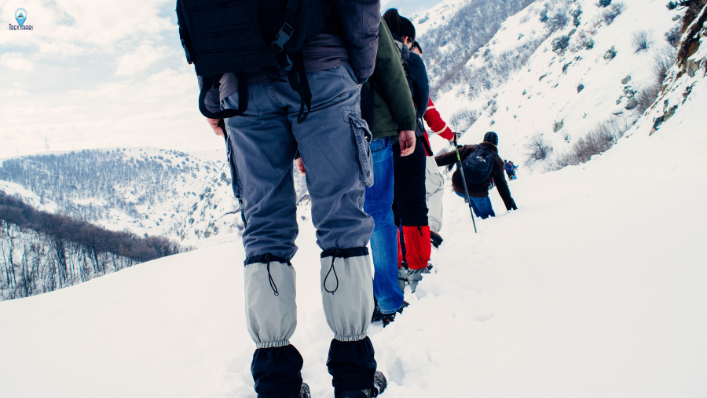“Embark on Epic Adventures: From Sunlit Sands to Majestic Peaks”
Introduction
“From Desert Safaris to Mountain Climbing: A Journey Through Diverse Adventure Landscapes” explores the thrilling spectrum of outdoor adventures that span the globe’s most captivating terrains. This narrative takes readers on an exhilarating expedition, beginning with the vast, sun-drenched expanses of desert landscapes, where the allure of sand dunes and the mystery of ancient cultures beckon explorers. It then ascends to the majestic heights of mountain ranges, where the challenges of climbing and the breathtaking vistas offer a different kind of adventure. Through vivid descriptions and engaging storytelling, this journey highlights the unique experiences and profound connections with nature that each landscape offers, inviting adventurers to embrace the diverse challenges and beauty of our planet’s most remarkable environments.
Exploring the Thrills of Desert Safaris: Tips and Destinations
Exploring the thrills of desert safaris offers an exhilarating experience that combines the raw beauty of nature with the excitement of adventure. As one embarks on this journey, it is essential to understand the unique characteristics of desert landscapes and the various activities they offer. Desert safaris are not merely about traversing vast stretches of sand; they are about immersing oneself in an environment that is both challenging and awe-inspiring. To fully appreciate the allure of desert safaris, one must consider the destinations that provide the most captivating experiences and the tips that ensure a safe and enjoyable adventure.
Among the most renowned destinations for desert safaris is the Arabian Desert, particularly the expansive dunes of the United Arab Emirates. Here, the golden sands stretch endlessly, offering a perfect backdrop for activities such as dune bashing, camel riding, and sandboarding. Dune bashing, a popular activity, involves driving a 4×4 vehicle across the undulating dunes, providing an adrenaline rush akin to a roller coaster ride. For those seeking a more traditional experience, camel riding offers a serene journey through the desert, allowing travelers to connect with the ancient Bedouin way of life. Sandboarding, on the other hand, caters to thrill-seekers who wish to glide down the dunes on a board, much like snowboarding but on sand.
Transitioning from the Arabian Desert to the vast Sahara, one finds a different yet equally captivating experience. The Sahara, stretching across North Africa, is the world’s largest hot desert and offers a unique blend of adventure and cultural exploration. In countries like Morocco and Egypt, desert safaris often include visits to ancient ruins and oases, providing a glimpse into the rich history and culture of the region. Travelers can embark on multi-day treks, either on foot or by camel, to explore the remote and breathtaking landscapes. The Sahara’s starry nights are a highlight, offering an unparalleled opportunity for stargazing in the clear desert sky.
While the destinations themselves are enticing, it is crucial to consider certain tips to ensure a safe and enjoyable desert safari experience. First and foremost, travelers should be mindful of the extreme temperatures in desert environments. It is advisable to dress in lightweight, breathable clothing and to apply sunscreen regularly to protect against the harsh sun. Staying hydrated is paramount, as the dry desert air can quickly lead to dehydration. Additionally, it is wise to travel with a knowledgeable guide who is familiar with the terrain and can navigate the challenges that may arise.
Moreover, understanding the local customs and respecting the environment are essential aspects of a responsible desert safari. Many desert regions are home to indigenous communities with rich cultural traditions. Engaging with these communities respectfully can enhance the overall experience, providing valuable insights into their way of life. Furthermore, preserving the natural beauty of the desert by minimizing waste and avoiding damage to the fragile ecosystem is a responsibility that all travelers should uphold.
In conclusion, desert safaris offer a unique blend of adventure, culture, and natural beauty. From the towering dunes of the Arabian Desert to the vast expanses of the Sahara, these landscapes provide a thrilling escape from the ordinary. By choosing the right destination and adhering to essential tips, travelers can embark on a journey that is both exhilarating and enriching, creating memories that will last a lifetime.
Conquering Peaks: A Guide to Mountain Climbing Adventures
Mountain climbing, an exhilarating pursuit that combines physical endurance with mental fortitude, offers adventurers the opportunity to conquer some of the world’s most majestic peaks. As one embarks on this journey, it is essential to understand the diverse landscapes and challenges that each mountain presents. From the snow-capped summits of the Himalayas to the rugged terrains of the Andes, each range offers unique experiences that cater to both novice climbers and seasoned mountaineers.
To begin with, the Himalayas, home to the world’s highest peaks, including Mount Everest, present a formidable challenge. The allure of these towering giants lies not only in their height but also in the rich cultural tapestry that surrounds them. Climbers often find themselves traversing through remote villages, where they can immerse in the local traditions and hospitality of the Sherpa community. However, the high altitudes and unpredictable weather conditions demand rigorous preparation and acclimatization. Therefore, it is crucial for climbers to undergo comprehensive training and ensure they are equipped with the necessary gear to tackle these formidable heights.
Transitioning from the Himalayas to the Andes, climbers encounter a different set of challenges and rewards. The Andes, stretching along the western edge of South America, offer a diverse range of climbing experiences. Aconcagua, the highest peak outside of Asia, is a popular destination for those seeking to test their limits. Unlike the technical climbs of the Himalayas, Aconcagua is known for its non-technical routes, making it accessible to climbers with varying levels of experience. Nevertheless, the extreme weather conditions and high altitudes require climbers to be in peak physical condition and to have a well-thought-out acclimatization plan.
As one moves further west, the Rocky Mountains in North America present a different kind of adventure. Known for their stunning vistas and diverse wildlife, the Rockies offer a range of climbing opportunities, from the challenging ascents of Longs Peak in Colorado to the more accessible trails of the Canadian Rockies. The region’s well-maintained trails and established climbing routes make it an ideal destination for climbers looking to hone their skills. Moreover, the Rockies’ proximity to urban centers provides climbers with easy access to resources and support, making it a convenient choice for those new to the sport.
In contrast, the Alps in Europe offer a blend of cultural richness and climbing history. As the birthplace of modern mountaineering, the Alps have long been a magnet for climbers from around the world. The iconic peaks of Mont Blanc and the Matterhorn provide a mix of technical challenges and breathtaking scenery. The well-developed infrastructure, including mountain huts and cable cars, allows climbers to focus on the ascent while enjoying the stunning alpine environment. Additionally, the Alps’ central location in Europe makes them easily accessible, attracting climbers from various parts of the continent.
In conclusion, mountain climbing is a pursuit that offers a diverse array of landscapes and experiences. Whether one is drawn to the towering heights of the Himalayas, the rugged beauty of the Andes, the accessible trails of the Rockies, or the historic peaks of the Alps, each range presents its own set of challenges and rewards. As climbers embark on their journeys, they must be prepared to face the physical and mental demands of the sport while embracing the unique cultural and natural environments that each mountain range offers.
Diverse Landscapes: Combining Desert and Mountain Adventures in One Trip
Embarking on a journey that combines the stark beauty of desert landscapes with the majestic allure of mountain terrains offers an unparalleled adventure experience. This unique blend of environments not only challenges the adventurous spirit but also provides a profound appreciation for the diverse natural wonders our planet has to offer. As travelers seek to quench their thirst for exploration, the opportunity to traverse both desert and mountain landscapes in a single trip becomes increasingly appealing.
Desert safaris, with their vast expanses of sand dunes and arid beauty, offer a unique adventure that is both thrilling and serene. The desert, often perceived as a barren wasteland, is in fact teeming with life and history. From the rolling dunes of the Sahara to the rugged terrain of the Arabian Desert, these landscapes provide a canvas for a variety of activities. Travelers can engage in exhilarating dune bashing, where skilled drivers navigate the undulating sands in powerful 4×4 vehicles, or opt for a more traditional camel trek, which allows for a slower, more immersive experience. As the sun sets, the desert transforms into a tranquil haven, offering stargazing opportunities that are unparalleled due to the absence of light pollution.
Transitioning from the desert to the mountains introduces a dramatic shift in both climate and scenery. Mountain landscapes, with their towering peaks and lush valleys, offer a stark contrast to the arid desert. The allure of mountain climbing lies not only in the physical challenge it presents but also in the breathtaking vistas that await at higher altitudes. Whether scaling the rugged cliffs of the Andes or trekking through the verdant trails of the Himalayas, mountain adventures provide a sense of accomplishment and a connection to nature that is deeply rewarding.
Combining these two distinct landscapes into one trip requires careful planning and consideration. The transition from the heat of the desert to the cooler, often unpredictable weather of the mountains necessitates a versatile approach to packing and preparation. Travelers must be equipped with appropriate gear for both environments, ensuring comfort and safety throughout their journey. Additionally, understanding the cultural and environmental significance of each landscape enhances the overall experience, allowing travelers to appreciate the unique characteristics and histories of the regions they explore.
Moreover, the juxtaposition of desert and mountain adventures offers a broader perspective on the resilience and adaptability of life. In the desert, one witnesses the tenacity of flora and fauna that have evolved to survive in harsh conditions, while the mountains showcase ecosystems that thrive in cooler, more temperate climates. This diversity underscores the importance of preserving these natural wonders for future generations, highlighting the need for sustainable tourism practices that minimize environmental impact.
In conclusion, the combination of desert and mountain adventures in a single trip offers a rich tapestry of experiences that cater to the adventurous spirit. By embracing the challenges and rewards of these diverse landscapes, travelers not only satiate their desire for exploration but also gain a deeper understanding of the natural world. As more individuals seek to embark on such journeys, the importance of responsible travel becomes paramount, ensuring that these awe-inspiring environments remain pristine and accessible for years to come.
Conclusion
“From Desert Safaris to Mountain Climbing: A Journey Through Diverse Adventure Landscapes” highlights the exhilarating experiences and unique challenges presented by the world’s varied terrains. The narrative underscores the transformative power of adventure travel, illustrating how each landscape—from the vast, arid deserts to the towering, rugged mountains—offers distinct opportunities for exploration and personal growth. By immersing oneself in these diverse environments, adventurers not only test their physical limits but also gain a deeper appreciation for the planet’s natural beauty and cultural richness. Ultimately, the journey through these contrasting landscapes serves as a testament to the enduring human spirit and the endless possibilities for discovery and connection with the world around us.



